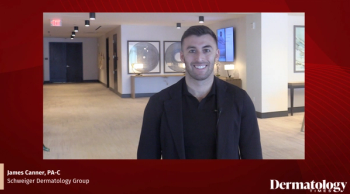
Doxycycline plus topical effective for severe acne
A 40mg doxycycline dose with a topical containing adapalene 0.3% and benzoyl peroxide 2.5% is an effective and safe treatment option for severe acne, according to a single-center pilot study published recently.
Combining a 40mg doxycycline dose (Oracea, Galderma) with a topical containing adapalene 0.3% and benzoyl peroxide 2.5% (Epiduo Forte, Galderma) is an effective and safe treatment option for severe acne, according to a single-center pilot study of 20 patients, published September 2019 in the Journal of Drugs in Dermatology.1
The study’s findings come at a time when dermatologists are looking for effective options for severe acne patients, according to study author Leon Kircik, M.D., clinical associate professor of dermatology at the Icahn School of Medicine at Mount Sinai and medical director of Physicians Skin Care and DermResearch in Louisville, Ky.
“Severe acne can be difficult to treat, and we’re looking for the best combinations. We use oral antibiotics but want to avoid oral antibiotics in order not to increase antibiotic resistance, which is a real issue,” Dr. Kircik said.
Current acne guidelines encourage judicious use of conventional systemic antibiotics, noting concerns of antibiotic resistance. These guidelines recommend multimodal treatment approaches that target inflammation, address hyperkeratinization and provide antibacterial effects. And guidelines endorse using topical retinoids and benzoyl peroxide for most acne patients, especially patients receiving oral antibiotics, according to the study.
Dermatologists use oral antibiotics in acne treatment not because of the drugs’ antimicrobial properties, but rather for anti-inflammatory properties. Oracea is a 40 mg anti-inflammatory dose of doxycycline that does not have an antibiotic effect and has no risk for development of bacterial resistance associated with its use, according to Dr. Kircik.
“Oracea is already approved for rosacea. So, we looked at if it would work for acne, which might benefit from its anti-inflammatory effect,” Dr. Kircik says. “In combination, we used a topical product which in this case is Epiduo Forte Gel.”
The regimen, which includes a sub-anti-microbial doxycycline dose with anti-inflammatory properties, as well as topical benzoyl peroxide and adapalene, with anti-inflammatory and anti-comedogenic properties, complies with current recommendations for severe acne treatment, according to the paper.
Dr. Kircik studied 20 subjects 18 and older, including men and women and white and black, severe acne patients. Each used the combination and after an initial acne screening at Dr. Kircik’s practice, turned for follow-up visits at weeks 4, 8 and 12. He instructed patients to apply the gel once daily, at night-a regimen he continues to use.
All the patients had an Investigator Global Assessment (IGA) score of 4 at baseline, indicating severe disease. By week 4 of the open label study, 75% of patients had a 1-grade IGA improvement; 40% of patients had a two-grade improvement, indicating mild acne; and 10% had a 3-grade improvement, meaning almost clear. At 12 weeks, 95% had a three-grade improvement or more from baseline.
Patients experienced significant reductions in inflammatory lesion, non-inflammatory lesion and nodule counts beginning at week four and continuing for the study’s duration, according to Dr. Kircik.
For example, inflammatory lesion counts fell 35% by week four, 62% by week eight and 80% from baseline at week 12.
“By week four, the percentage of patients with 0 nodules was 70% compared to baseline of 20%,” according to the study.
While treatment was generally well-tolerated, six patients had adverse events. Generalized sunburn, sunburn on the face and nausea occurred in three patients and might have been a result of the study medications, according to Dr. Kircik.
Best candidates for the combination treatment include severe acne patients that don’t want to be on long-term oral antibiotics or on isotretinoin, he says.
“The combination does work quite effectively,” Dr. Kircik says. “However, we have to be aware of the shortcomings of this study--that this was an off-label study in 20 people. It’s open label so everybody is going to get better somehow. But there is some signal that this combination might work in severe acne patients.”
Disclosures:
Disclosure: Dr. Kircik has served as an investigator, consultant or speaker for Almirall, Botanix, Cassiopea, Foamix, Galderma, Mayne Pharma, Novartis, Ortho Dermatologics and Sun Pharma. Galderma funded this study.
References:
References:
1. Kircik LH. Anti-Inflammatory Dose Doxycycline Plus Adapalene 0.3% and Benzoyl Peroxide 2.5% Gel for Severe Acne. J Drugs Dermatol. 2019;18(9):924-927.
Newsletter
Like what you’re reading? Subscribe to Dermatology Times for weekly updates on therapies, innovations, and real-world practice tips.


















